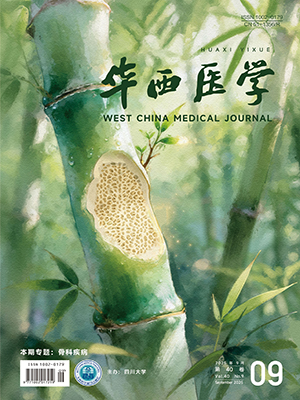| 1. |
Borovac JA. The molecular mechanisms and therapeutic targets of atherosclerosis: from basic research to interventional cardiology. Int J Mol Sci, 2024, 25(9): 4936.
|
| 2. |
Döring Y, van der Vorst EPC, Weber C. Targeting immune cell recruitment in atherosclerosis. Nat Rev Cardiol, 2024, 21(11): 824-840.
|
| 3. |
Tian S, Wang Y, Wan J, et al. Co-stimulators CD40-CD40L, a potential immune-therapy target for atherosclerosis: a review. Medicine (Baltimore), 2024, 103(14): e37718.
|
| 4. |
Snijckers RPM, Foks AC. Adaptive immunity and atherosclerosis: aging at its crossroads. Front Immunol, 2024, 15: 1350471.
|
| 5. |
Du Z, Guo S, Sun Y, et al. Causal relationships between dietary habits and five major mental disorders: a two-sample Mendelian randomization study. J Affect Disord, 2023, 340: 607-615.
|
| 6. |
Li W, Zhou Q, Zhou L, et al. Causal role of immune cell phenotypes in idiopathic sudden sensorineural hearing loss: a bi-directional Mendelian randomization study. Front Neurol, 2024, 15: 1368002.
|
| 7. |
Chen Z, Guo Y, Sun H, et al. Exploration of the causal associations between circulating inflammatory proteins, immune cells, and neuromyelitis optica spectrum disorder: a bidirectional Mendelian randomization study and mediation analysis. Front Aging Neurosci, 2024, 16: 1394738.
|
| 8. |
Orrù V, Steri M, Sidore C, et al. Complex genetic signatures in immune cells underlie autoimmunity and inform therapy. Nat Genet, 2020, 52(10): 1036-1045.
|
| 9. |
Sidore C, Busonero F, Maschio A, et al. Genome sequencing elucidates Sardinian genetic architecture and augments association analyses for lipid and blood inflammatory markers. Nat Genet, 2015, 47(11): 1272-1281.
|
| 10. |
Li P, Wang H, Guo L, et al. Association between gut microbiota and preeclampsia-eclampsia: a two-sample Mendelian randomization study. BMC Med, 2022, 20(1): 443.
|
| 11. |
Tao T, Tang A, Lv L, et al. Investigating the causal relationship and potential shared diagnostic genes between primary biliary cholangitis and systemic lupus erythematosus using bidirectional Mendelian randomization and transcriptomic analyses. Front Immunol, 2024, 15: 1270401.
|
| 12. |
He C, Kim HI, Park J, et al. The role of immune cells in different stages of atherosclerosis. Int J Med Sci, 2024, 21(6): 1129-1143.
|
| 13. |
Yang J, Lin W, Ma Y, et al. Investigation of the causal association between Parkinson’s disease and autoimmune disorders: a bidirectional Mendelian randomization study. Front Immunol, 2024, 15: 1370831.
|
| 14. |
Khan FU, Khongorzul P, Raki AA, et al. Dendritic cells and their immunotherapeutic potential for treating type 1 diabetes. Int J Mol Sci, 2022, 23(9): 4885.
|
| 15. |
Quirant-Sánchez B, Plans-Galván O, Lucas E, et al. HLA-DR expression on monocytes and sepsis index are useful in predicting sepsis. Biomedicines, 2023, 11(7): 1836.
|
| 16. |
Lusta KA, Poznyak AV, Sukhorukov VN, et al. Hypotheses on atherogenesis triggering: does the infectious nature of atherosclerosis development have a substruction?. Cells, 2023, 12(5): 707.
|
| 17. |
Gindri Dos Santos B, Goedeke L. Macrophage immunometabolism in diabetes-associated atherosclerosis. Immunometabolism (Cobham), 2023, 5(4): e00032.
|
| 18. |
Chen X, Liu C, Wang J, et al. Hematopoietic stem cells as an integrative hub linking lifestyle to cardiovascular health. Cells, 2024, 13(8): 712.
|
| 19. |
Meng Q, Liu H, Liu J, et al. Advances in immunotherapy modalities for atherosclerosis. Front Pharmacol, 2023, 13: 1079185.
|
| 20. |
Piras L, Zuccanti M, Russo P, et al. Association between immune checkpoint inhibitors and atherosclerotic cardiovascular disease risk: another brick in the wall. Int J Mol Sci, 2024, 25(5): 2502.
|
| 21. |
Baardman J, Lutgens E. Regulatory T cell metabolism in atherosclerosis. Metabolites, 2020, 10(7): 279.
|
| 22. |
Hinkley H, Counts DA, VonCanon E, et al. T cells in atherosclerosis: key players in the pathogenesis of vascular disease. Cells, 2023, 12(17): 2152.
|
| 23. |
Wang C, Zhu Y, Pan D. Identifying the causal relationship between immune factors and osteonecrosis: a two-sample Mendelian randomization study. Sci Rep, 2024, 14(1): 9371.
|




